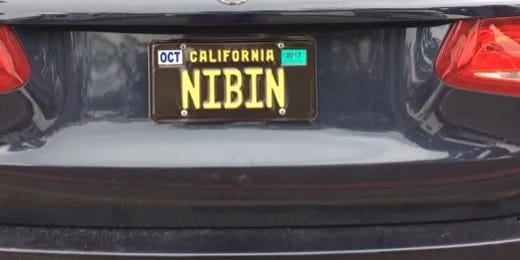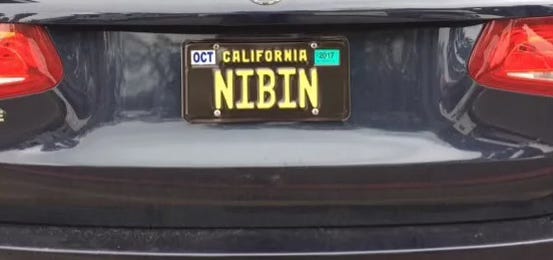The phrase “do no harm” is widely recognized as a guiding principle of the Hippocratic Oath, reminding medical professionals that their first duty is to avoid causing harm - even in their efforts to heal. Yet, interestingly, the oath itself never explicitly states, “first, do no harm.”
In a similar way, a Policing Hippocratic Oath serves as a declaration of values, reinforcing the responsibility of law enforcement to protect communities from harm. But to me, its core principle extends beyond simple protection - it’s about an enduring commitment to justice for victims and perpetrators alike, resolution for families, and peace for communities impacted by crime.
When I think about this oath in action, I can’t help but connect it to Pete Gagliardi and the National Integrated Ballistic Information Network (NIBIN). In my mind, Pete and NIBIN share the same neural pathway in my mind as the Policing Hippocratic Oath - a commitment to using intelligence, technology, and relentless follow-up to pursue justice.
Pete is often regarded as the Godfather of NIBIN - not just because he once drove around with a NIBIN license plate, but because he was there at its inception 26 years ago, shaping it into the national crime-fighting tool it is today.
So why am I thinking about the Hippocratic Oath, Pete, and NIBIN?
Let me explain.
Last week, I posted about how NIBIN played a key role in exposing an immigration fraud scheme in Kansas City, Missouri, leading to the arrest of two transnational criminals who exploited the U-Visa program. Justice for perpetrators.
Before that, I shared how NIBIN helped solve the cold case murder of Sheila Wallace in Cleveland’s McGowan Park neighborhood. Justice for victims.
And I’ll never forget the 2014 Brendan Tevlin case, where a terrorist traveled across the country from Washington State, where he had murdered three victims, to West Orange, New Jersey, and murdered a fourth, a University of Richmond student home on summer break. The community was in shock, the police scrambled to piece together the mystery, and panic was setting in - until NIBIN provided the break that brought resolution to Brendan’s grieving family and friends.
Then there’s the January 2023 case in Albuquerque, where multiple shootings targeted the homes of elected officials, leaving the community on edge. A routine traffic stop and firearm seizure became the break detectives needed when NIBIN linked the guns to the prior shootings. The suspect? A former New Mexico House candidate, charged and brought to justice. More importantly, the case closure provided peace to the shaken community.
Pete was my first real introduction to the power of NIBIN. Before he lent a helping hand to what was once a struggling NIBIN program in New Jersey, I saw it as just an evidentiary tool - for court presentation. His mentorship changed that. Today, his vision and lessons live on in one of the most successful statewide NIBIN programs in the nation. He showed us all that NIBIN isn’t just about solving cases - it’s about justice, resolution, and peace.
And NIBIN delivers on that promise every day.
Right now, across the country, NIBIN generates a new investigative lead every 2.4 minutes. Since 1997, law enforcement agencies have submitted nearly 6.5 million pieces of ballistic evidence, leading to over 1 million investigative leads.
That’s why I believe NIBIN is a critical enabler of the Policing Hippocratic Oath. It allows law enforcement to do more than just avoid harm - it empowers them to live their oath, harness the tools at their disposal to actively pursue justice, provide resolution, and restore peace in the communities they serve.
Epilogue ~ A Story about Justice for Perpetrators
Pete once told me a story about a machine gun murder case of his from back in the 1980s. The unique markings on the fired bullets and cartridge cases collected from the murder scene led to the identification of the manufacturer and a batch of 3,000 firearms.
Pete said they learned that three of the guns went to a rogue “kitchen table” dealer in Connecticut who converted them into machine guns and outfitted them with silencers. He and several others were co-conspirators in a trafficking scheme that armed the killers.
At one point during the investigation, the gun dealer tried to reassure a co-conspirator that they could not get caught. As he tried to make the point that the police had nothing to go on, he said during an electronically monitored conversation:
“They got nothing - all they got is some brass on the floor”.
That may have been the attitude of some criminals toward the forensic science capabilities of the police back in 1980 - but even back then it would prove to be a huge miscalculation.
Pete said he learned a lesson way back then to approach every crime committed with a gun with the presumption that every crime gun and piece of ballistic evidence can provide actionable crime-solving information of tactical and strategic value.
Some might consider the lesson learned 45 years ago by Pete to be an obvious one, especially when we look at today’s world where tools like NIBIN empower us to make meaningful progress.
But believe it or not, even such an obvious truth remains neglected or disorganized in many places. The potential for change is immense, and it’s up to us to take action and harness the tools at our disposal to bring order, clarity, and impact where it’s needed most.





